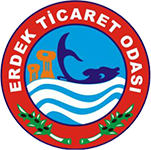[vc_row][vc_column width=”3/4″]
Erdek History
In the ages of history, Herodotus was the first to speak of Artake. Artake was colonized by the Miletus at the beginning of the 7th century BC and under the rule of Cyzicus with all of Kapidag before 361 BC. Artake, which gradually lost its importance alongside the constantly rising and shining Kyzikos during the Hellenistic era, became an outer neighborhood of this site during the Roman period. With the Byzantine era, the ports of the buildings whose buildings were neglected and destroyed by earthquakes were looted. Historian Herodotus praised his grape, wine, olive and olive oil by considering his economic situation. Artake was conquered by Suleyman Pasha, son of Orhan Gazi in 1339 and passed under Turkish rule. In the Ottoman period, we learn from Erdek’s book called Seyahatname by Evliya Çelebi.
Evliya Çelebi, who came to Erdek twice in 1639, speaks of Erdek’s wood and fevkan two-storey houses, khans baths, four mihrab mosques, 25,000 acres of vineyards and nine kinds of wine. Again in an interesting memory of Evliya, it is related to the small Zeytinli Ada which is located in the port of Erdek today. Evliya Çelebi talks about Zeytinli Island: Erd This Erdek has a boiling hot water in his garb as much as a whole table in a mile of bait derya, so that Adam cannot tolerate entering and laugh at the place where he enters the earth. Two kinds of gigantic combination of the mighty of the vital cavidani and satisfied as if they find a vital cavidani body. » lines and the healing waters of Zeytinli Island.
According to the Ottoman census of 1891, the number of people living in Erdek was 33,007. The majority of them (89%) are Greeks (29,165 people). The Turkish population in Erdek is 3,070 (9%). 91% of Erdek’s central population was Christians.
In 1807, it was connected to the Sanjak Square. Until the end of the 19th century, Erdek (Bandırma was a district due to Erdek accident), which was an accident due to this banner, became a district of Bandırma until 1930s and became a separate district center. The population, which was 10,000 in 1980, reached 20,000 in 2000. In 1924, Karacaova (Karacaabat) and Kavala Pomaks of Crete and Bosnians were settled in the center of Erdek, which was evacuated by the Greeks during the exchange.[/vc_column_text][/vc_column][vc_column width=”1/4″]




